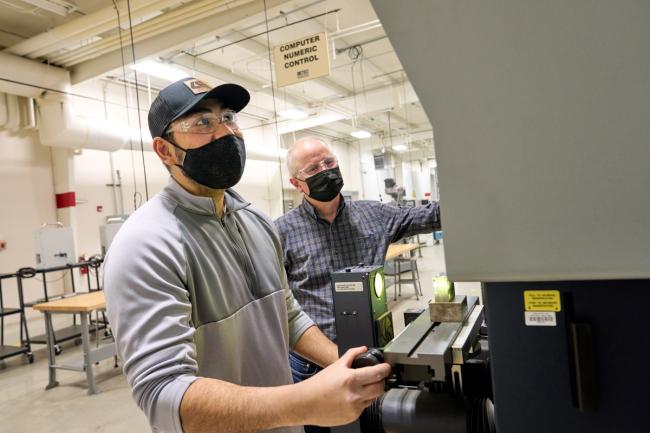Nov. 1, 2021, GRAND RAPIDS, Mich. -- State economic and workforce officials met today with Grand Rapids Community College leaders and local business, workforce development and community representatives at GRCC to discuss Gov. Gretchen Whitmer’s plans to invest federal stimulus dollars to support the economy.
The event is part of a statewide tour designed to gather stakeholders to discuss a comprehensive strategy to use American Rescue Plan funds to support small businesses, grow the middle class and invest in communities.
“We have a strong commitment to carrying out the governor’s economic vision that tackles structural challenges in an effort to grow Michigan's economy, create good-paying jobs and build industries of the future,” said Susan Corbin, director of the Michigan Department of Labor and Economic Opportunity. “It is critical that we work together and hear from a diverse set of voices throughout the state, so that we can continue our economic recovery and build Michigan back better.”
The goal of these events is to share the governor’s vision with key stakeholders and thought leaders and highlight local projects that demonstrate how the MI New Economy plan can move the state’s economy forward.
The Grand Rapids stop of the tour included presentations from LEO and an open discussion with other local leaders to highlight their initiatives – current and on the horizon – that align with Whitmer’s MI New Economy plan.
Whitmer’s plan includes continued support for state programs Futures for Frontliners and Michigan Reconnect, which provide free in-district community college tuition to eligible residents. The programs are part of Whitmer’s plan to have 60% of state residents earn a college credential by 2030.
GRCC President Bill Pink said he appreciated the state’s support for the students, and suggested community colleges could have state support for success coaches and wraparound services to help students starting or restarting their education through the programs.
“At this institution, this semester we have about 3,000 students on campus taking advantage of those dollars,” Pink said. “What’s helpful is to have those dollars come with the systems that we need to give those students some support. It’s great to be able to bring someone 30 years old back to school who didn’t think they’d be able to navigate college. It’s awesome to get them in the door. We have to make sure we have the boots on the ground to help them be successful. We want them to have access, and success.”
Whitmer in August came to GRCC to talk about increased funding for the two scholarship programs and Going PRO, which provides in-demand career skills.
Last month Whitmer detailed her economic agenda, including the unveiling of the three pillars of her $2.1 billion MI New Economy plan with goals that will help state leaders track progress on efforts to build a stronger and more resilient Michigan. The pillars are focused on economic development, workforce and community investment.
“Workforce development, small business growth and affordable housing investments are all connected and necessary to advance Michigan’s economy,” said Jeremy DeRoo, CEO of Dwelling Place of Grand Rapids. “Growing these in a coordinated effort that aligns with the work local partners are already doing will allow Michigan to emerge stronger than before the crisis.”
In addition to the college attainment goals, the governor’s plan also calls for:
- Lifting 100,000 families out of working poverty during the next five years.
- Providing access to low- or no-cost childcare for 150,000 more families by 2024.
- Becoming a top 10 state for small business job growth and revenue growth from 2022 to 2026.
- Becoming a top 10 state for household income growth during the next five years.
- Becoming a top 10 state for growth in venture capital funding over the next five years.
- Creating 100% access to high-speed internet and 95% adoption by households during the next five years, while continually investing in higher quality access.
- Creating 75,000 new or rehabilitated housing units in five years.
Additional information about the MI New Economy plan is available at www.michigan.gov/MINewEconomy.
